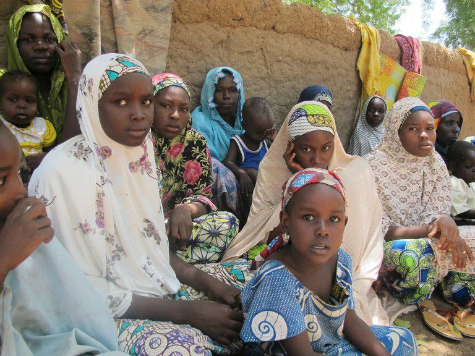
A recent study has documented that nearly half (49.8%) of all Liberian women have been genitally mutilated but this practice seems to be decreasing among younger girls. The practice is not considered a crime.
In fact, the Central West African region that practices FGM, especially Liberia and Sierra Leone, are unique in certain ways.
Although the Dutch, Portuguese, and British had trading posts in West Africa, Liberia was first colonized by free American Blacks in the early 19th century. This was an Abolitionist vision, one which President Thomas Jefferson shared. Britain settled the Black Poor of London in Sierre Leone.
The Americo-Liberians created a cultural and racial caste system with themselves at the top and the indigenous Liberians at the bottom. They practiced slavery. In the late 20th and early 21st centuries, after years of terrible and unending civil wars, both traditional, Christian, and Muslim pro-peace Liberian women took to the streets; eventually they helped elect a Christian woman, Ellen Johnson Sirleaf, as President.
This is not surprising. Liberia (40% traditional religions, 40% Christianity and traditional religions, 20% Muslim); Sierre Leone (60% Muslim, 30% Christian, 10% traditional religions); Guinea (85% Muslim, 10% Christian, 5% traditional); Ivory Coast (39% Muslim, 30% 17% Atheist, 12% Christian), are all countries which initiate girls into the traditionally mandatory Sande Society.
The Sande Society is an all-female secret society which conducts rites of passage for young girls which last anywhere from months to up to a year. The Society retreats into the forest. The older women initiate a group of young girls into adulthood. The girls are given new names. Unique wooden face masks are created for them. They are instructed in hair-plaiting, dancing, medicine, farming, and sexual matters.
A clitoridectomy, performed by female “experts,” is part of this initiation. This procedure, which is painful and risky, is believed to bond the initiates for life, prepare girls for the pain of childbirth, remove what is “male” about them, and increase their fertility. The Sande Society believes that women are more spiritual than men and are in closer touch with the Spirit World. The type of FGM practiced in Liberia is Type 1 and Type 2: a clitoridectomy and the partial or total removal of the clitoris and the labia minora. There is life-long scarring. Only after this initiation has taken place is the girl considered marriageable.
In 2012, when Liberian journalist Mae Azango reported on the Sande Society and clitoridectomies, she received death threats. However, anti-FGM campaigner and survivor, Alimatu Dimonekene welcomes the new research and hopes it will lead to the abolition of the practice. Prior to the Ebola outbreak there were “94 organizations contributing to campaigns to end FGM.”
Clearly, the Ebola crisis has disrupted all normal practices. But, when the crisis has passed, one wonders whether or not the Sande Society will become outdated, whether FGM will be criminalized, and whether the government will enforce the law.

COMMENTS
Please let us know if you're having issues with commenting.